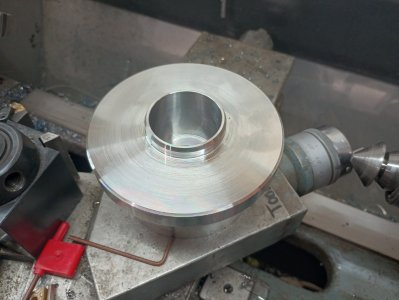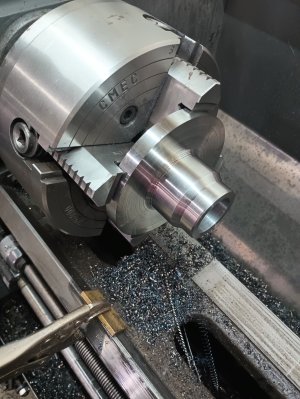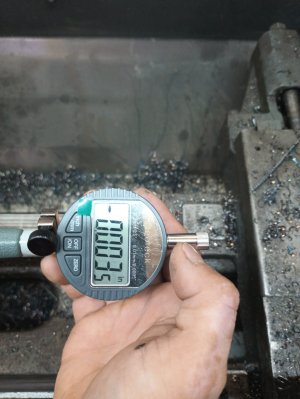I’d give it a try during the roughing phase. Also try a faster feed rate. I usually go to the point where the chips just turn from straw to blue (straw when they are airborne, [light] blue once they have landed). The lathe will let you know if it is still happy. 4000 series steels like relatively big bites for good surface finishes. Also prevents work hardening which can be a problem with light cuts.do you guys think i should take a bigger bite ?
Are you planning on finishing the dimensions (at least both faces) once the flange is mated to the new crank?
You going to use the “BBQ & freezer” method to get the flange onto the crank?



